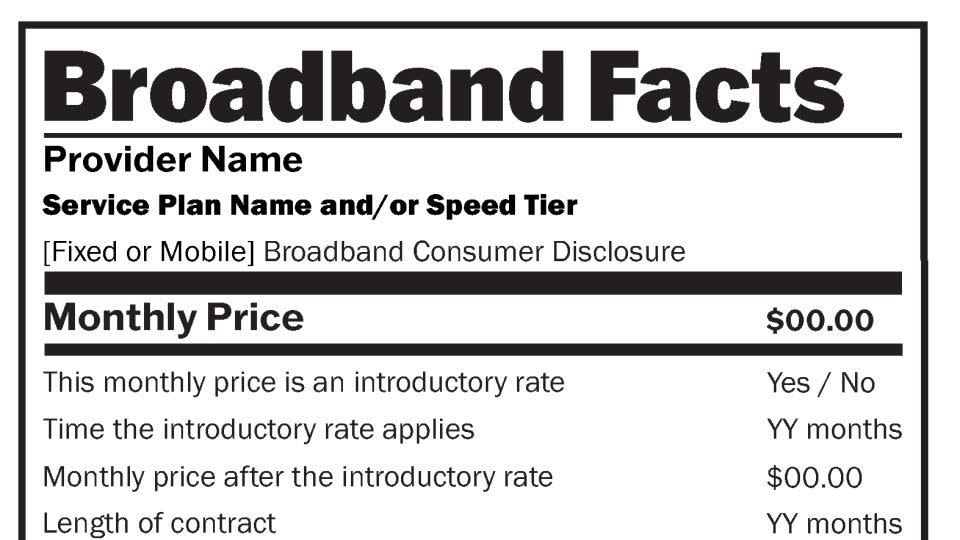FCC rolls out mandatory ‘nutrition labels’ for internet providers’ plans
The next time you go shopping for a home or mobile internet plan, you’re going to see a new label lay out exactly what you can expect to pay, the typical download speeds you’ll get and information about the internet provider’s policies.
That information will now be standardized across providers and displayed in a new disclosure modeled after the nutrition labels you see on food packaging in grocery store aisles, according to the Federal Communications Commission.
The new labels, which go live beginning Wednesday and that all major internet service providers (ISPs) will now be required to show, are among the latest steps by the US government to help consumers make sense of the mix of plans, fees and promotional rates on the market today.
The transparency the labels provide could help Americans save money, FCC and White House officials say.

“The FCC borrowed the nutrition label model format from food products because we wanted to make basic information about broadband internet service easily recognizable and easy to understand,” Alejandro Roark, the FCC’s bureau chief for consumer and government affairs, told reporters on a conference call.
Known as “consumer broadband labels,” the FCC-mandated disclosures must be offered at the point of sale both online and in stores — and in many cases, in both English and Spanish.
They will have to include information about early termination fees, data caps and network practices such as speed throttling. And they will have to be easily accessible: Providers won’t be allowed to bury the labels in fine print or on separate web pages, and consumers will need to be able to refer to them conveniently anytime they pay their bills or want to compare plans, Roark said.
Americans are still limited in many parts of the country to just a small number of providers. And in a report last month, the FCC found that tens of millions of Americans still don’t have access to high-speed internet at all. The problem is particularly acute in rural and tribal areas, where roughly a quarter of Americans lack broadband.
Worse, an estimated 23 million households — representing nearly 1 in 5 US households and an estimated 59 million Americans overall — are at risk of losing their internet plans altogether due to the looming end of a popular federal aid program that will run out of money as soon as this month. Without the Affordable Connectivity Program, many will be forced to choose between having internet at home and paying for groceries, surveys show.
Still, forcing ISPs to be more clear with consumers could be a small step toward improving competition among internet providers, and is part of a broader Biden administration push to fight junk fees and other misleading business practices, said a White House official on the call.
“These are mechanisms which are designed to make it more likely that companies will compete with each other on the grounds of consumer price and quality of products and less likely to compete with each other on confusing terms or by misleading customers,” the official said.
The labels have been years in the making. In 2016, an FCC advisory committee first released a version of the disclosures that providers were not required to adopt. Then, under the 2021 bipartisan infrastructure law, the FCC moved to implement mandatory broadband disclosure labels and held a lengthy process to design and finalize them.
The end result could give consumers an easier way to compare plans and offerings from providers such as Comcast, Verizon and AT&T. And because the labels must be machine-readable, they could help researchers and product review sites gather data on the ISPs’ plans and marketing.
Because providers will be required to prominently display the labels, FCC officials will be monitoring for evidence or consumer complaints about non-compliance, which could lead to agency investigations or fines.
“We’re going to be keeping a close eye to see if there are any issues with implementation,” said an FCC official on the call.
For more CNN news and newsletters create an account at CNN.com
